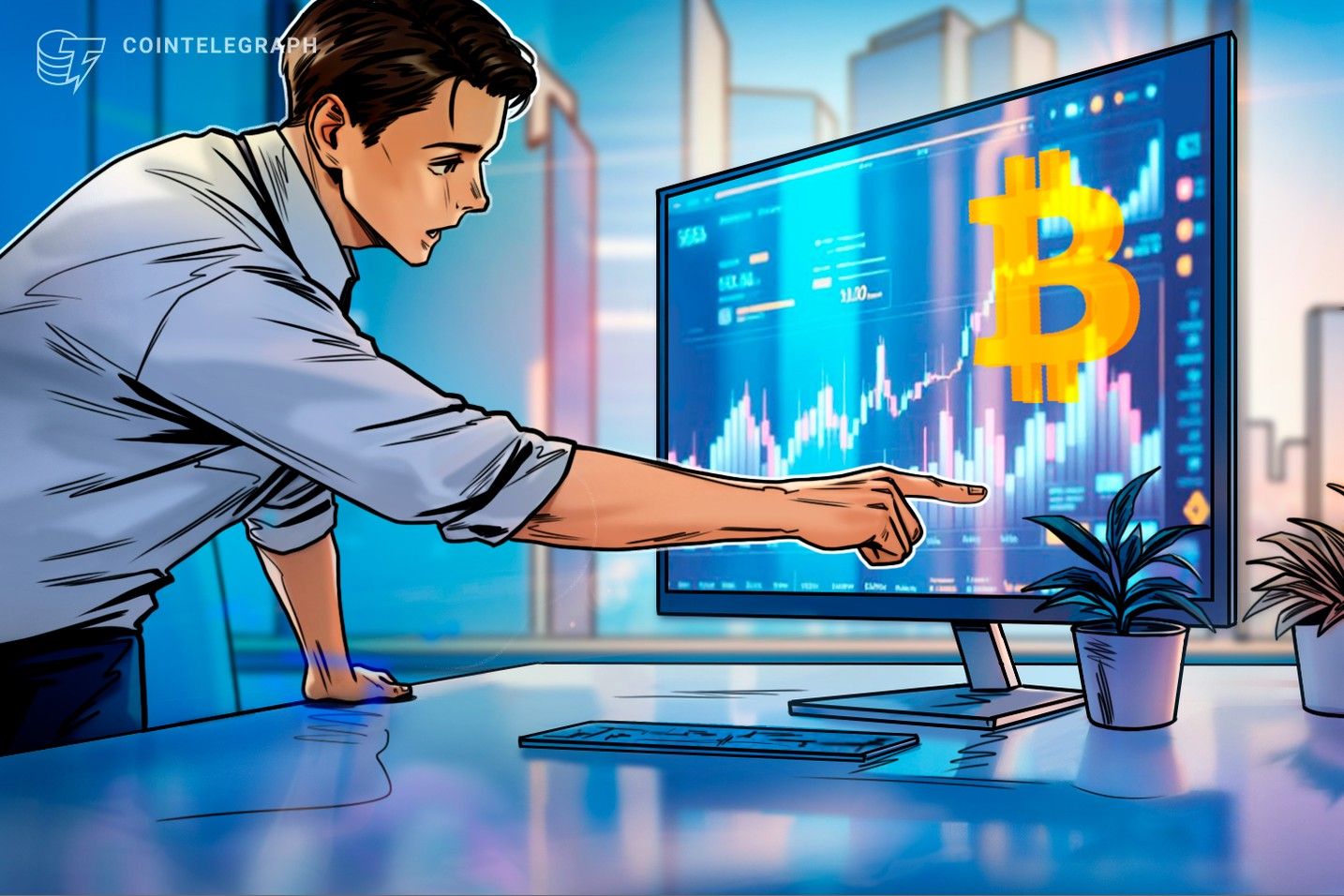PING launches the Launchpad c402.market, aiming to be the Pump.fun of the x402 ecosystem?
c402.market’s mechanism design is more inclined to incentivize token creators, rather than only benefiting minters and traders.
Original Title: "$PING rebounds 50%, a quick look at the $PING-based launchpad project c402.market"
Original Author: David, TechFlow Deep Tide
The x402 narrative has been hot for half a month, but not many new assets have emerged from it.
The reason is, firstly, because x402 leans towards payment services between AIs, which doesn't fit the usual "asset creation" routine common in crypto;
Another reason is that most crypto projects around the x402 protocol are focused on infrastructure, benefiting more from the hype of the tech narrative rather than making substantial product progress in the short term.
However, the first asset created based on x402, $PING (even though it's a meme), has instead become the first to make moves.
On November 10, the official PING Twitter account @pingobserver announced the launch of the token launchpad c402.market based on the x402 protocol, expected to go live at 10 PM (UTC+8) that night.
As soon as the news broke, the price of the PING token quickly surged from its daily low, with a 24-hour increase of nearly 50%.
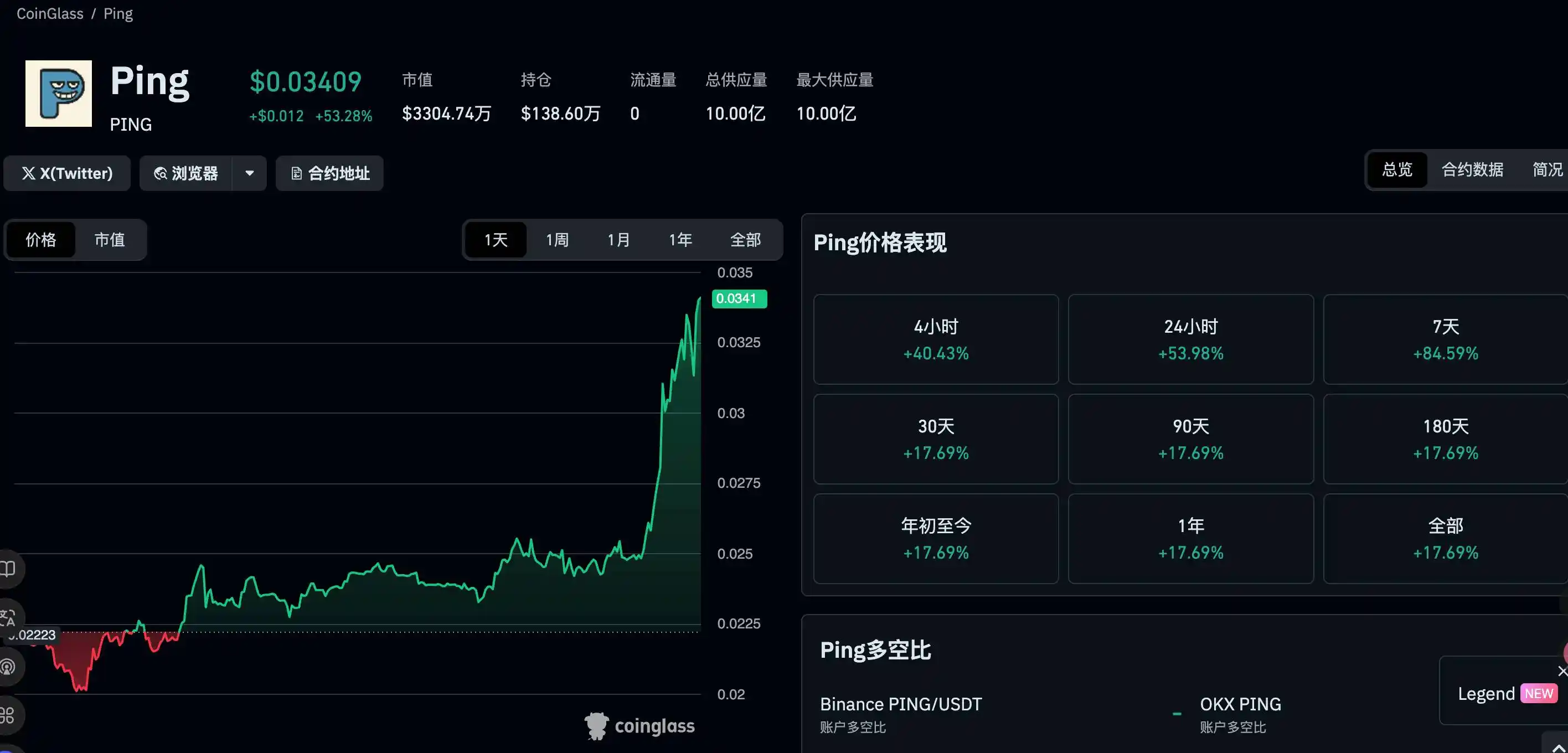
In short, the core mechanism of c402.market is: all new tokens issued on the platform will by default be paired and traded with $PING.
In other words, PING is no longer just a meme token in the x402 narrative, but has transformed into the "base currency" of the entire c402 ecosystem. If you want to participate in new projects on the platform, you need to hold PING.
This is an old trick. Pump.fun in the Solana ecosystem made SOL a must-have for meme trading; various launchpads on the Base chain gave ETH real use cases.
Now, c402.market is trying to make PING play a similar role in the x402 ecosystem.
At this point in time, the market is in a bull-bear divergence period. Some people think the market is in a bear phase, with no new narratives, so they are not optimistic about new assets; others believe that altcoin season is coming in a form you don't expect, and there must be local opportunities within it.
As trading data for the x402 protocol has declined, launching a more trading- and asset-creation-focused x402 concept launchpad may be a local opportunity in the current market.
However, can PING succeed in transforming from a simple meme coin to a so-called ecosystem currency? For ordinary investors, what opportunities are there, and what pitfalls are hidden?
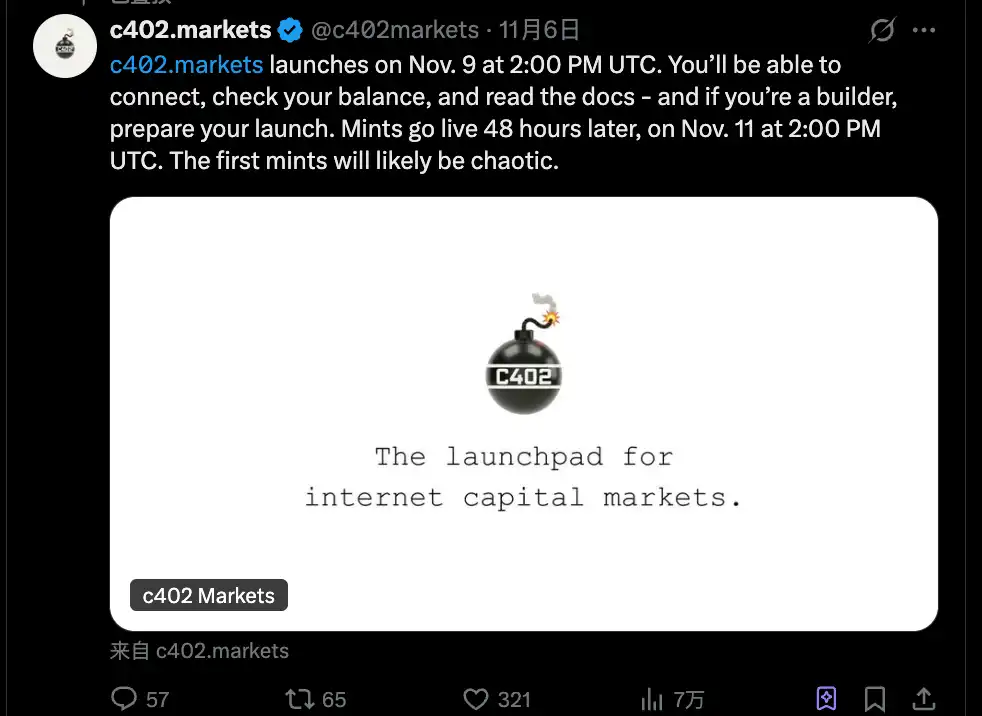
Quick Review of x402 and PING
For those unfamiliar with x402, here’s a quick summary:
x402 is an open payment protocol launched by Coinbase in May 2025. It allows websites, APIs, and AI agents to make payments directly using stablecoins (mainly USDC), without the need for accounts, passwords, or API keys.
Its core mechanism is simple, as we introduced a month ago: when you access a paid service, the server returns an HTTP 402 status code (a "payment required" code that has long existed in internet protocols but was never enabled), telling you how much you need to pay.
You send an on-chain payment with your wallet, then request again; after the server verifies, you get access via X402. The whole process can be completed in 2 seconds, with zero fees.
The reason x402 became popular is inseparable from $PING, because the latter truly brought a wealth effect.

$PING is the first token issued through the x402 protocol. Users do not need to register an account on a website; they just visit a URL, receive a "402 payment required" prompt, pay a small amount of USDC, and after re-requesting, receive PING tokens.
This token itself doesn't have much utility, more like a meme, but its genes carry the "first token created via x402" halo, reminiscent of the last wave of inscriptions. So, there has been a lot of speculation around it in the past month. At launch, it surged 30x, and its market cap once exceeded 60 million USD.
However, after PING became popular, the x402 ecosystem fell into an awkward situation:
The protocol is cool, the tech narrative is strong, and the giants are backing it; but apart from the PING meme coin, the ecosystem lacks more "assets" for people to participate in. x402 is more like a payment infrastructure than a token issuance tool.
Most related projects are doing AI Agent services, API marketplaces, and other B2B businesses, which are too far from the "speculation needs" of ordinary crypto investors.
The market needs a place that can continuously produce new assets and allow retail investors to participate in early-stage projects. This is the background for the emergence of c402.market.
You may not like this setup, but defining it as pure hype and ignoring it is another extreme.
c402.market, the Pump.fun of the x402 Ecosystem?
Open the official website of c402.market, and you’ll see a concise and bold slogan:
"The mintpad for internet capital markets"
That's right, it's the familiar ICP narrative again. Combining the grand terms "internet" and "capital markets," they try to dress up what is essentially a token launch platform as something revolutionary.
Simply put, c402.market is a token launchpad based on the x402 protocol, where anyone can quickly issue tokens, and these tokens will automatically be paired and traded with $PING.
Before talking about the launch mechanism, you need to understand what a "c402 token" is. c402 is a self-innovated token standard, essentially an ERC-20 token that supports the x402 protocol and has a built-in public minting mechanism. The official term is "internet coins."
This means that tokens issued on c402.markets are not just ordinary ERC-20s, but natively support the x402 payment protocol.
Theoretically, these tokens can be used directly in AI Agent payment scenarios or any application that requires HTTP 402 status code-triggered payments. But in reality, most people care about their speculative value, not their technical features.
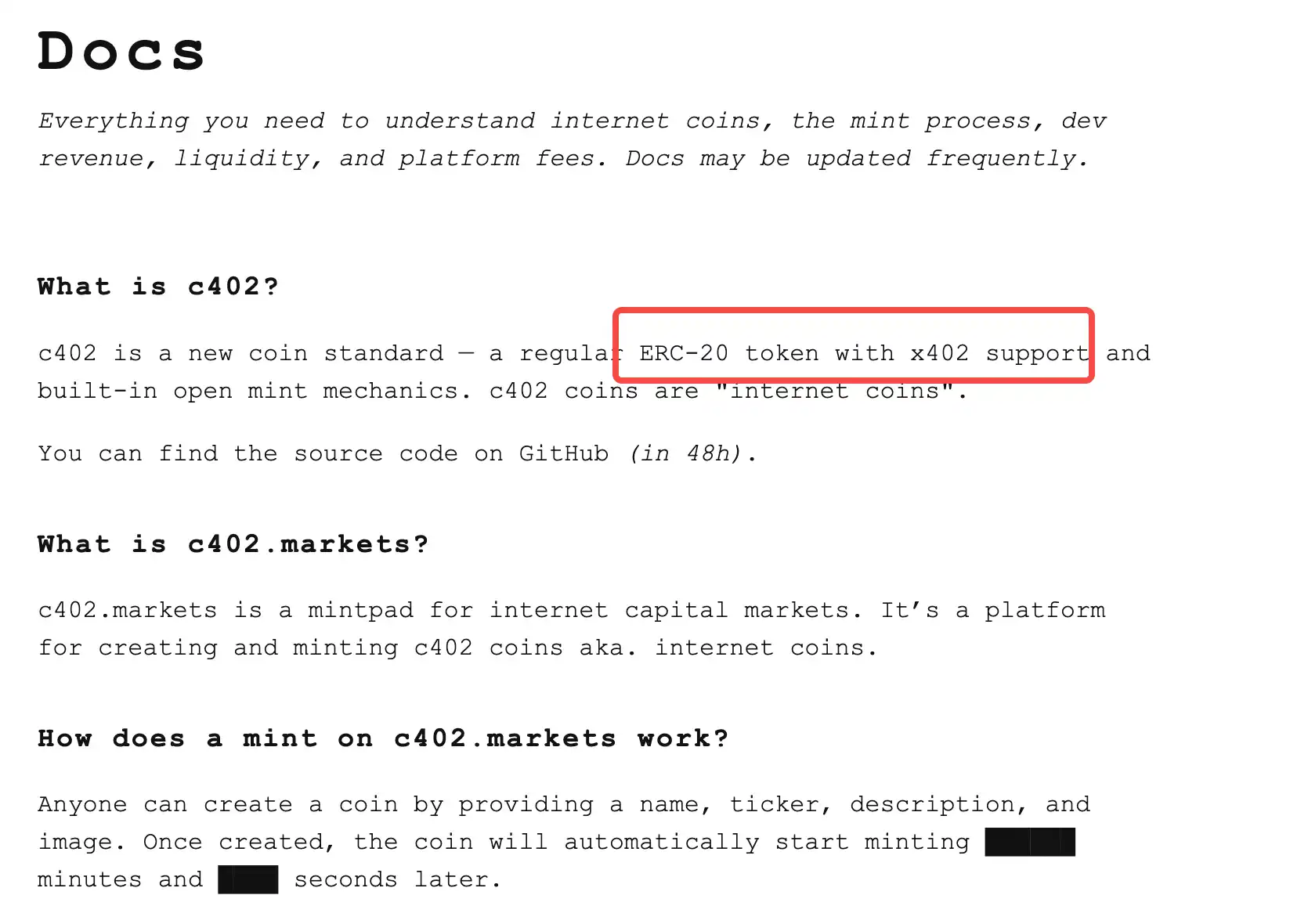
The launch mechanism of c402.market heavily borrows from Pump.fun's "Bonding Curve" model, but with some tweaks. Each token has a fixed total supply of 1 billion, with no team allocation and no reserved shares.
According to the official documentation, the distribution structure for a launched token is:
· 49% distributed through public minting, each mint requires a payment of 1 USDC
· 49% automatically used to provide liquidity
· 2% as a developer reward
Minting process:
1. Create a token: Anyone can create a token by providing a name, code, description, and image. Creation requires a 1 USDC "anti-spam" fee
2. Wait for minting to open: After the token is created, minting will automatically start after a fixed time (interestingly, the official documentation uses █ to cover the specific time, which may be a few to a dozen minutes; the exact time may only be revealed after the product officially launches)
3. Rush to mint: Users mint tokens by paying 1 USDC. The number of mints is limited
4. Automatic listing: Once all minting shares are sold out, the collected USDC will be automatically processed
Principle of PING Pairing: USDC → PING → Liquidity Pool
This is the most crucial part of the whole mechanism and the core logic by which PING benefits.
According to the project's Github description, when a c402 token is fully minted, all collected USDC will be used to buy the designated paired token (initially only PING is supported), and then, together with the remaining 49% of the token supply, will be added as liquidity to the pool and locked.
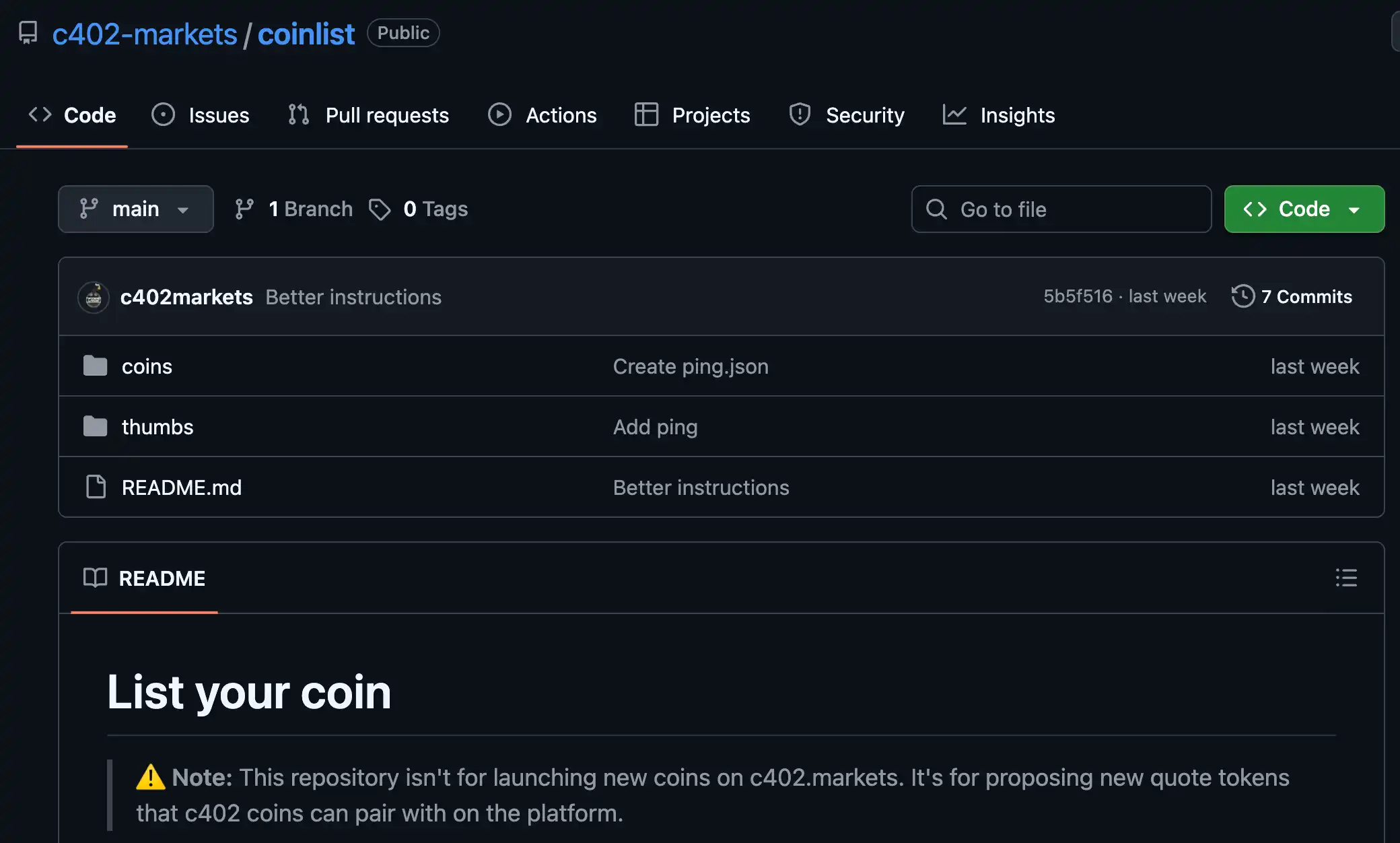
For example: Suppose someone creates a token called $COIN and chooses $PING as the paired asset. The minting phase requires a certain number of transactions; if we assume 10,000 transactions, that's 10,000 USDC.
1. Minting phase: Users mint with USDC, and 10,000 USDC is collected
2. Automatic exchange: The 10,000 USDC is automatically used to buy $PING via Uniswap
3. Provide liquidity: The purchased PING + 490 million $COIN (49% of supply) are added to the Uniswap v4 liquidity pool and permanently locked
4. Developer reward: 20 million $COIN (2% of supply) goes to the token creator.
What does this mechanism mean for PING?
Every time a new token is successfully minted on c402.market, there is a forced buy of USDC → PING. If there are 10 projects minted on the platform each day, each collecting 10,000 USDC, that's 100,000 USDC of PING buy orders per day.
This may also explain why the launch of c402.market caused the price of PING to soar by 50%. The market is pricing in the expectation of continuous future buy orders or the potential for the ecosystem to succeed.
Who’s Making Money?
The fee structure of c402.market is as follows:
For minters:
· Each mint pays 1 USDC
· 2% of which is a platform fee (0.02 USDC)
· Gas fee (very cheap on Base chain, but still needs to be paid)
For token creators:
· Pay a 1 USDC "anti-spam" fee c402 when creating a token
· Receive 2% of the token supply as a reward
· Receive a 1% fee share from liquidity pool trades (partially paid in tokens) c402
The documentation also mentions that if you build your own frontend and set yourself as the referrer, you can take the 2% platform fee, achieving zero platform fee minting.
Although only PING is supported as the paired asset initially, the c402.market GitHub repo has already opened a "paired token whitelist" submission mechanism. Any project can submit a PR to apply to add their token as a pairing option, but it must have sufficient (locked) liquidity on Uniswap v3 or v4, and the JSON format and image specs must meet requirements; after approval, it must also be manually whitelisted on-chain.
This means that in the future, c402.market may support USDC, ETH, or other tokens as paired assets, not just PING. But at least at launch, PING is the only option.
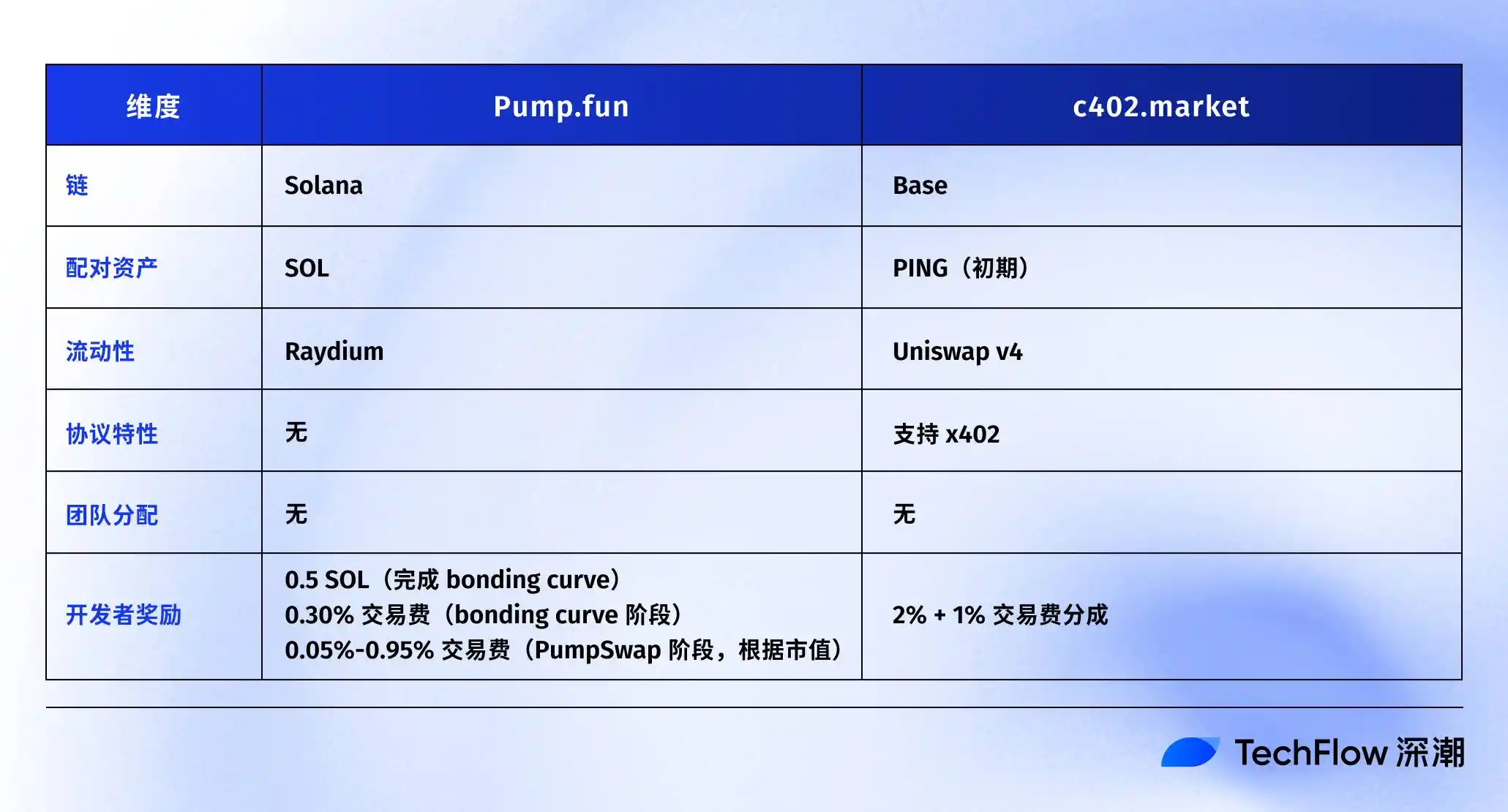
It can be seen that c402.market’s mechanism design is more inclined to incentivize token creators, not just benefit minters and traders. But as everyone knows, this could also lead to the platform being flooded with low-quality projects, since creators have economic incentives to keep launching new tokens.
As of press time, c402.market has just announced its imminent launch (November 10, 10 PM (UTC+8)). Many details in the official documentation are still █-redacted, including the specific number of mints, time windows, "bribery mechanisms," etc.
This may be to prevent bots from preparing in advance, or the team may not have finalized them yet.
The real test will only come after the first batch of projects goes live, the first batch of liquidity forms, and the first batch of traders start to compete, to see how this mechanism performs in practice.
Finally, asset creation and new launches are always themes in the crypto market, now just shifted to the x402 concept; in the absence of many new narratives, cautious participation may be a pragmatic choice.
Disclaimer: The content of this article solely reflects the author's opinion and does not represent the platform in any capacity. This article is not intended to serve as a reference for making investment decisions.
You may also like
XRP profit-taking signals ‘weakness’: Will it delay recovery to $3?
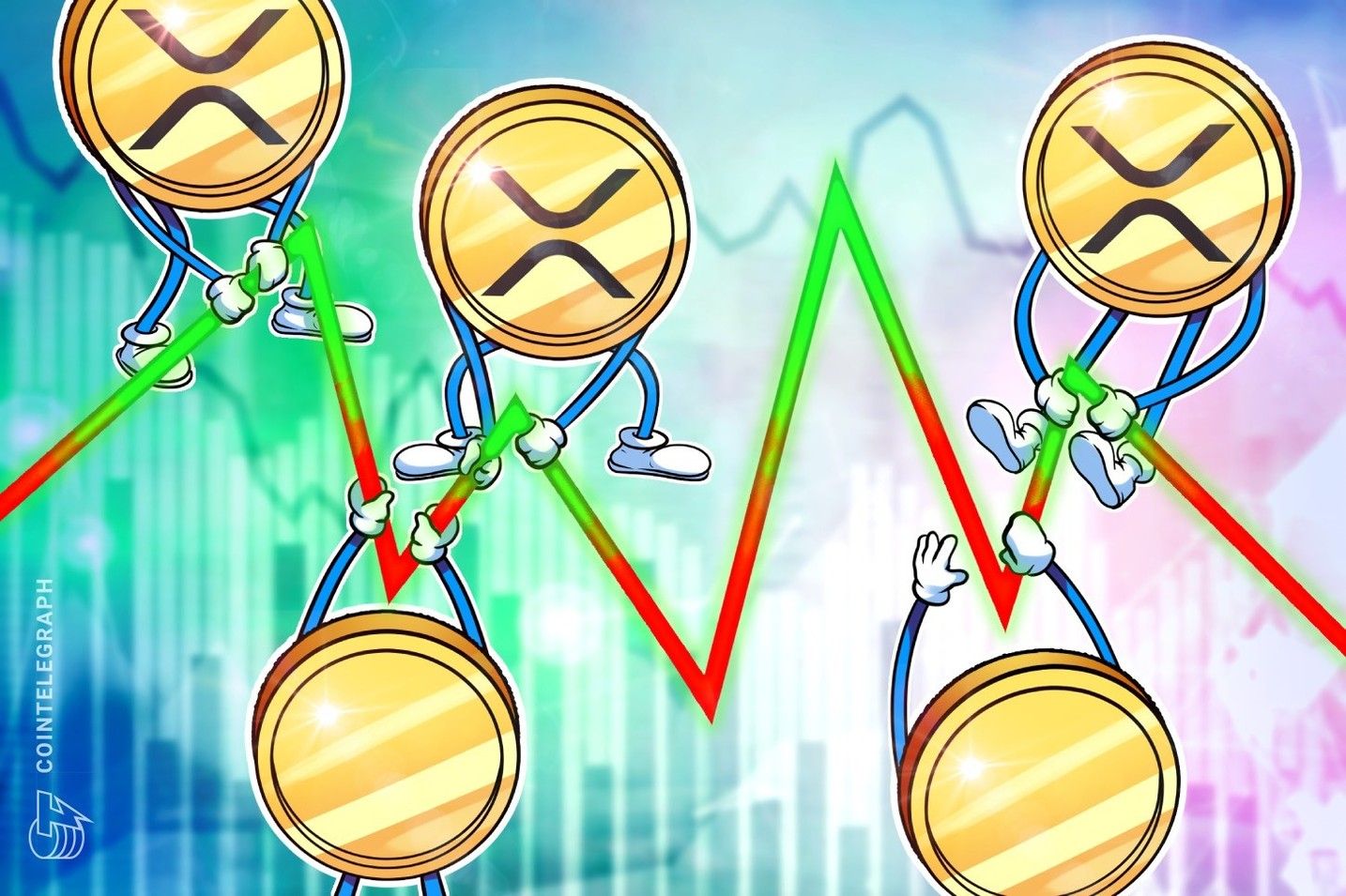
Zcash may see ‘violent end’ as ZEC price rallies 1500% in just two months
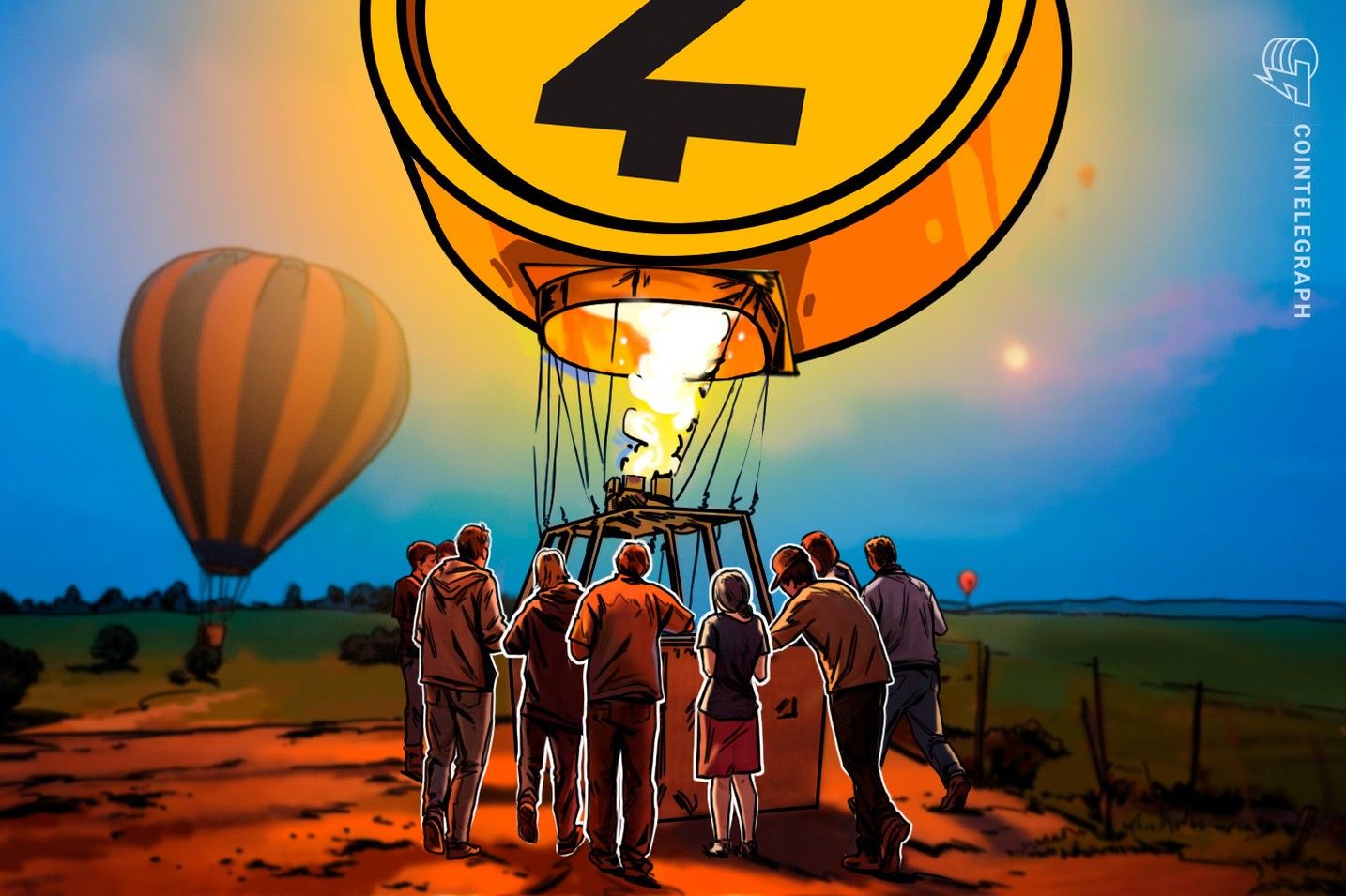
Bitcoin, ETH ETFs see $1.7B outflow but whale buying softens the price impact
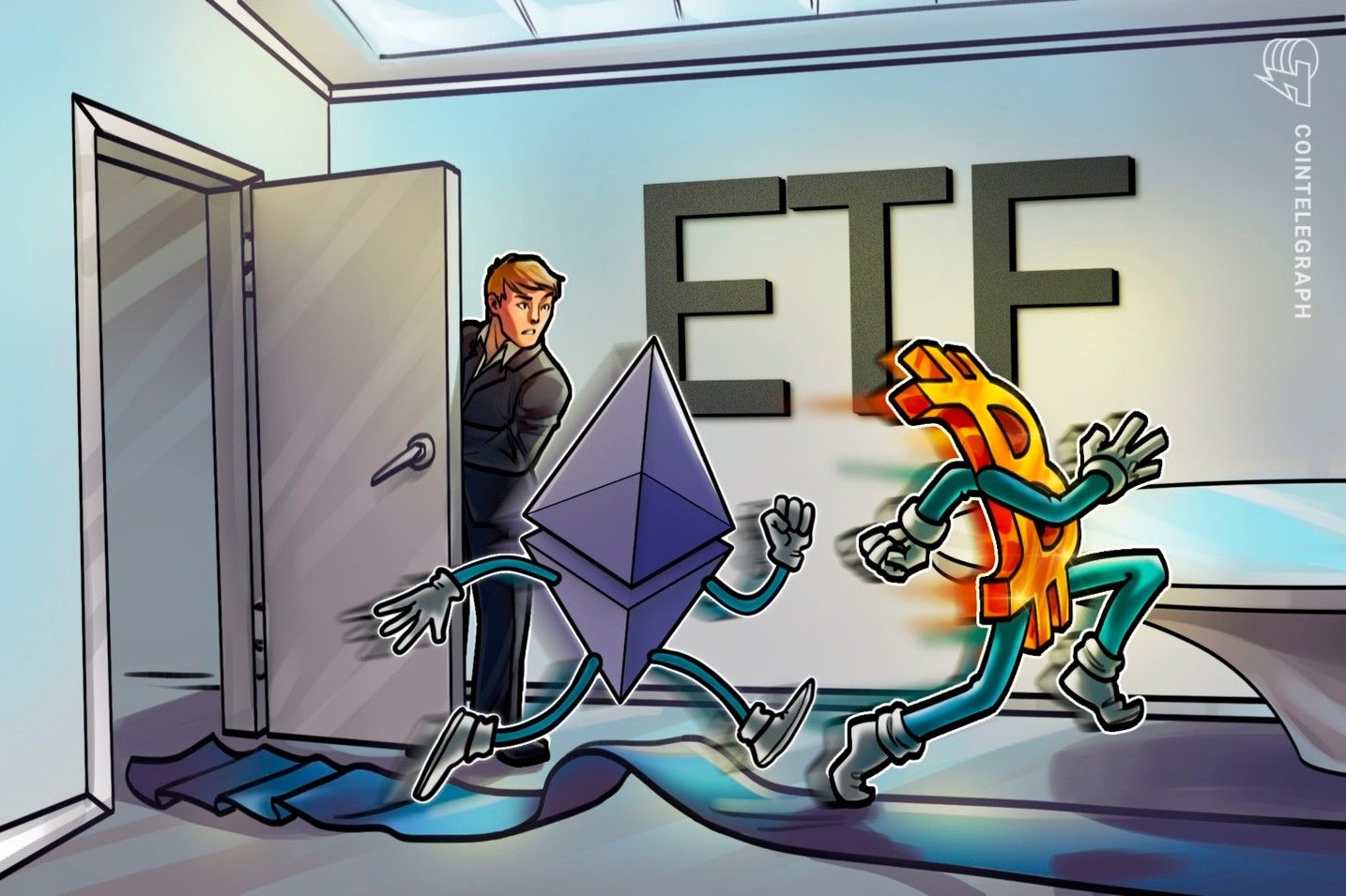
Bitcoin’s next move could shock traders if BTC price breaks above $112K
